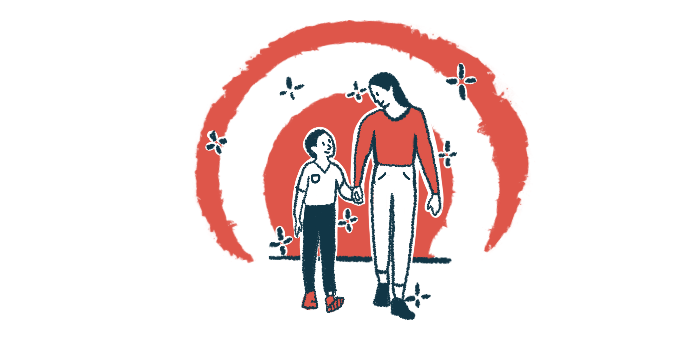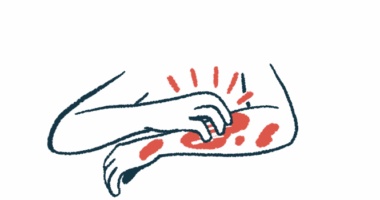IBAT inhibitors have potential to boost life quality for patients
They are future standard of care for long-term Alagille treatment: Researchers

Alagille syndrome comes with a high clinical, economic, and quality-of-life burden for patients and their families, but new treatments such as Livmarli (maralixibat) and Bylvay (odevixibat) could change the future outlook, according to a recent review study.
These oral therapies, which belong to a class called ileal bile acid transporter (IBAT) inhibitors, may be able to ease debilitating symptoms and delay the need for a liver transplant, overall reducing healthcare costs and improving life quality, according to researchers.
“IBAT inhibitors are the future standard of care for long-term treatment of patients with ALGS [Alagille syndrome],” they wrote.
The study, “The burden of Alagille syndrome: uncovering the potential of emerging therapeutics – a comprehensive systematic literature review,” was published in the Journal of Comparative Effectiveness Research. It was funded by Mirum Pharmaceuticals, which markets Livmarli.
Alagille syndrome is a rare genetic disease characterized by problems in the liver and bile ducts (which carry the digestive fluid bile from the liver to the small intestine), as well as in other organs including the heart, eyes, kidneys, and bones.
Severe itching can substantially interfere with daily life
Patients experience a wide range of symptoms that can substantially interfere with daily life and reduce life quality. Among them is pruritus, or severe itching, which arises when bile flow out of the liver is stalled (cholestasis) and bile acids accumulate in the bloodstream.
Over the last few years, two oral therapies have been approved in the U.S. and European Union for itching in Alagille: Livmarli and Bylvay (sold as Kayfanda in Europe). Both are IBAT inhibitors, which essentially work to increase the amount of bile acids excreted in stool in order to prevent their accumulation.
In the recent report, scientists aimed to provide a comprehensive summary of the burden and life-quality impacts of Alagille, and how new therapies such as IBAT inhibitors may alter this in the future.
They conducted a systematic review of 119 previously published studies, including clinical trial, quality-of-life, cost/resource use, and epidemiological studies.
The studies generally reflected a high disease burden characterized by a wide variety of clinical symptoms, including cholestasis, heart problems, kidney disease, poor bone health, and stunted growth in children.
Consistent with this high disease burden, studies reported negative effects of Alagille on life quality in patients relative to healthy people. There was also a high burden on caregivers, including in areas such as work, finances, sleep, and emotional well-being.
“These studies highlight the significant impairment in HRQoL [health-related life quality], physical health and psychosocial functioning of patients with ALGS and the negative emotional impact and burden this has on their caregivers and family,” the researchers wrote.
Alagille was also associated with high medical resource use, especially among those who required a liver transplant.
Off-label medications used to manage pruritus before IBAT inhibitors available
Before IBAT inhibitors became available, managing pruritus largely relied on off-label use of medications not specifically approved for Alagille, such as ursodeoxycholic acid.
However, these agents have limited efficacy and can have intolerable side effects, according to the researchers. Even with these interventions, pruritus in Alagille is often uncontrolled and is a leading indication for liver transplant.
Other indications for liver transplant in Alagille include failure to grow, xanthomas, which are waxy looking bumps caused by fatty deposits under the skin, bone disease, vitamin deficiency, and liver failure.
Several studies showed a majority of Alagille patients need a liver transplant by adulthood, with many patients needing one in early childhood. Complications from liver transplants pose a mortality risk for patients.
Emerging data related to IBAT inhibitors suggested these therapies may change the treatment landscape for Alagille and lead to better patient care.
Clinical studies of Livmarli demonstrated reductions in blood bile acids and pruritus, as well as improvements in growth, life quality, and sleep. Some data have also suggested it may delay or reduce the need for liver transplants.
Studies of Bylvay, the more recent IBAT inhibitor to come to market for Alagille, have also demonstrated an ability to ease pruritus, lower bile acid levels, and improve sleep.
“Based on their disease-modifying potential and ability to transform the lives of patients with ALGS through amelioration of cholestatic-related symptoms along with improvement in HRQoL, IBAT inhibitors are the new standard of care for long-term treatment of patients with ALGS,” the researchers concluded.







